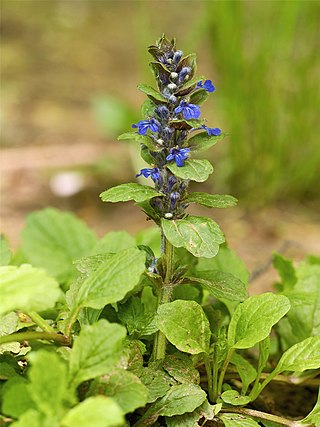
Ajuga, also known as bugleweed, ground pine, carpet bugle, or just bugle, is a genus of flowering plants in the Ajugeae tribe of the mint family Lamiaceae. There are over 60 species of annual or perennial, mostly herbaceous plants. They are native to Europe, Asia, Africa, and Australia.

Osmanthus is a genus of about 30 species of flowering plants in the family Oleaceae. Most of the species are native to eastern Asia ,and was originally found in the middle east of the Himalayas, with a few species from the Caucasus, New Caledonia, and Sumatra. Osmanthus has been known in China since ancient times with the earliest writings coming from the Warring States period; the book Sea and Mountain. South Mountain states: "Zhaoyao Mountain had a lot of Osmanthus".
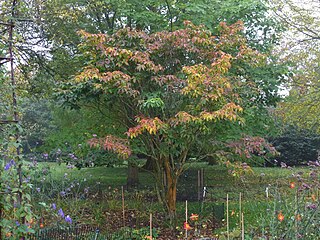
Neoshirakia, known as milktree, is a genus of plants in the Euphorbiaceae, native to east Asia. It is part of a group first described in 1954 with the name Shirakia, but this proved to be an illegitimate name, unacceptable under the Code of Nomenclature. The genus was later divided, with its species distributed amongst three genera: Neoshirakia, Shirakiopsis, and Triadica. Neoshirakia contains only one known species, Neoshirakia japonica, known as tallow tree, native to China, Korea, and Japan. The name Shirakia thus became a synonym of Neoshirakia because S. japonica was the type species for that genus, the species now renamed N. japonica.

Rohdea is a genus of plants native to eastern Asia. It was long thought to contain only a single species, R. japonica, but recent studies have resulted in several other taxa being transferred into the genus.

Daphniphyllum is the sole genus in the flowering plant family Daphniphyllaceae and was described as a genus in 1826. The genus includes evergreen shrubs and trees mainly native to east and southeast Asia, but also found in the Indian Subcontinent and New Guinea.
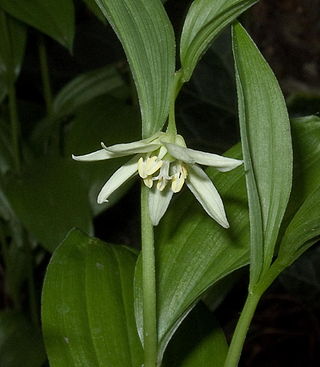
Disporum is a genus of about 20 species of perennial flowering plants, found in Asia from northern India to Japan, south to Indonesia and north into the Russian Far East.

Microstegium is a genus of African, Asian, and Pacific Island plants in the sorghum tribe within the grass family. Browntop is a common name.

Gastrodia, commonly known as potato orchids or as 天麻属 , is a genus of terrestrial leafless orchids in the family Orchidaceae, about ninety of which have been described. Orchids in this genus have fleshy, upright stems and small to medium-sized resupinate flowers with narrow sepals and petals. They are native to Asia, Australia, New Zealand, central Africa, and various islands of the Indian and Pacific Oceans.

The Eastern Asiatic Region is the richest floristic region within the Holarctic Kingdom and situated in temperate East Asia. It has been recognized as a natural floristic area since 1872 August Grisebach's volume Die Vegetation der Erde and later delineated by such geobotanists as Ludwig Diels, Adolf Engler, Ronald Good and Armen Takhtajan.

Calanthe discolor is a species of orchid. It is native to Japan, and China, Korea. Its vernacular name in Japanese, ebine, (海老根) means "shrimp-root" in reference to the shape of the plant's pseudobulbs and root system.
Chikusichloa is a genus of Asian plants in the grass family.
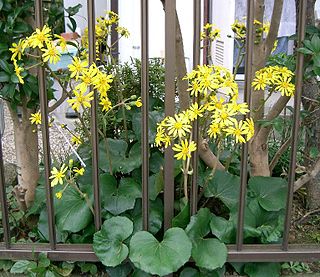
Farfugium is a genus of flowering plants in the family Asteraceae, native to streams and seashores in east Asia. They are rhizomatous evergreen perennials with rounded leathery leaves and bright yellow flowers in autumn and winter. Species include Farfugium japonicum, with variegated cultivars for use in horticulture.

Kadsura is a genus of woody vines in the Schisandraceae described as a genus in 1810.

Isachne is a widespread genus of tropical and subtropical plants in the grass family, found in Asia, Africa, Australia, the Americas, and various oceanic islands. They may be known generally as bloodgrasses.

Peristylus, sometimes commonly known as ogre orchids or bog orchids is a genus of flowering plants from the orchid family, Orchidaceae. It consists of over 100 known species found across much of eastern and southern Asia as well as in Australia and on many islands of the Indian and Pacific Oceans.

Lilium medeoloides is an East Asian herb in the lily family. It is native to southeast China, Jeju-do in Korea, Japan and eastern Russia, where it grows in forests and on grassy and rocky subalpine areas.
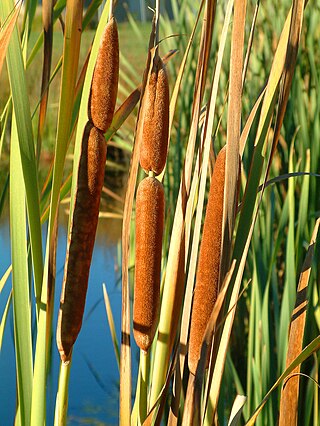
Typha orientalis, commonly known as bulrush, cumbungi, or raupō, is a perennial herbaceous plant in the genus Typha. It is native to Australia, New Zealand, Malaysia, Indonesia, Japan, Korea, Mongolia, Myanmar, Philippines, China and the Russian Far East.

Suzukia is a genus of plants in the family Lamiaceae, first described in 1930. It contains two known species, native to Taiwan and the Ryukyu Islands.
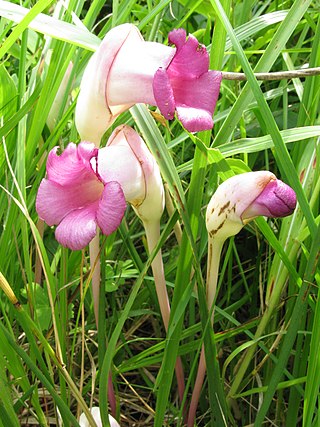
Aeginetia is a genus of plants in the broomrape family Orobanchaceae, native mostly to tropical Asia and also Cameroon.
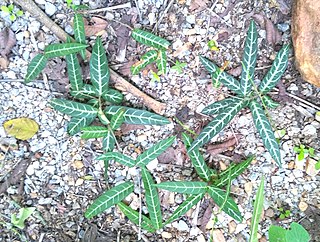
Gardneria is a genus of flowering plants belonging to the family Loganiaceae.



















